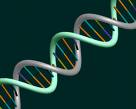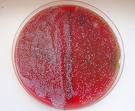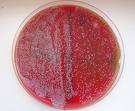London: British scientists are developing a technique to aid paralysed patients to walk using stem cells to repair spinal cord damage. It may also benefit stroke victims and allow some blind and deaf people to see and hear.
It takes self-regenerating stem cells from nerves in the lining of the nose and injects them into damaged points in the spine.
The cells provide a bridge enabling spinal nerves to grow and potentially to re-connect, alleviating or possibly curing paralysis.
The first ten patients will be treated next year at the National Hospital in Queen’s Square, London, following successful tests in dogs and rats.
The research has been called the ‘Superman’ spinal cure after actor Christopher Reeve, who played the superhero.
Reeve campaigned tirelessly for stem cell research after being paralysed in a horse riding accident in 1995.
He died last year aged 52 without seeing his dream come true.
Professor Geoffrey Raisman, who is leading the clinical trials, was presented with a research medal in the actor’s name by Meryl Streep in New York last week.
He told a London conference yesterday: ‘It will be historic if we can show it works. It will open the door.
‘There is enormous potential for treating injuries which at the moment cannot be cured.’
The stem cells used are in nerves which connect the nose with the brain, allowing us to smell.
Unlike most other cells in the body, these regenerate throughout adulthood.
The cells will be multiplied in the laboratory and injected into the spinal cord.
Harvesting the cells is difficult and currently only a small number can be retrieved, limiting the type of injury that can be treated.
‘At present we can only multiply the cells two or threefold,’ said Professor Raisman, who began his research 35 years ago.
‘We have to spread them as thinly as possible to form a bridge, so we can only treat small injuries.
‘If this works there will be a tidal wave of interest and we can then work to get bigger replication.’
The first patients will have suffered an injury where the nerves in their arm have lost their connection with the spinal cord, resulting in limited arm movement.
The injury normally occurs in motorbike accidents and never recovers of its own accord.
Professor Raisman, who is chairman of the committee on neurological regeneration at the Institute of Neurology, University College London, said: ‘We know that no one with this condition has ever recoveredso if we get one patient to recover it is important.
‘We are trying something that has never been done. This is a unique trial and we hope it will lead to an incredible advance.
‘There is no way currently of repairing damage to the spinal cord and nerves.
‘I have spent my lifetime on this, and this is the crucial step.’
Scientists in China are reported to have successfully treated spinal cord victims but this has not been independently corroborated.
Trials are being carried out in Australia, with results expected in 2007.
Professor Raisman added: ‘Stroke, blindness and deafness can all be caused by nerve damage and this is the first step towards a treatment.
It is something this country can absolutely lead on.’
Controversy has surrounded research on stem cells – which have the ability to become many different types of tissue in the body – where they are taken from embryos.
But the latest work uses the patient’s own stem cells – and it avoids the risks of rejection.
Professor Raisman’s team is funded entirely through donations raised by a consortium of charities including the British Neurological Research Trust.
‘Our programme costs half a million pounds a year which isn’t much in the great scheme of things, but I spend 90 per cent of my time fundraising,’ he added.








